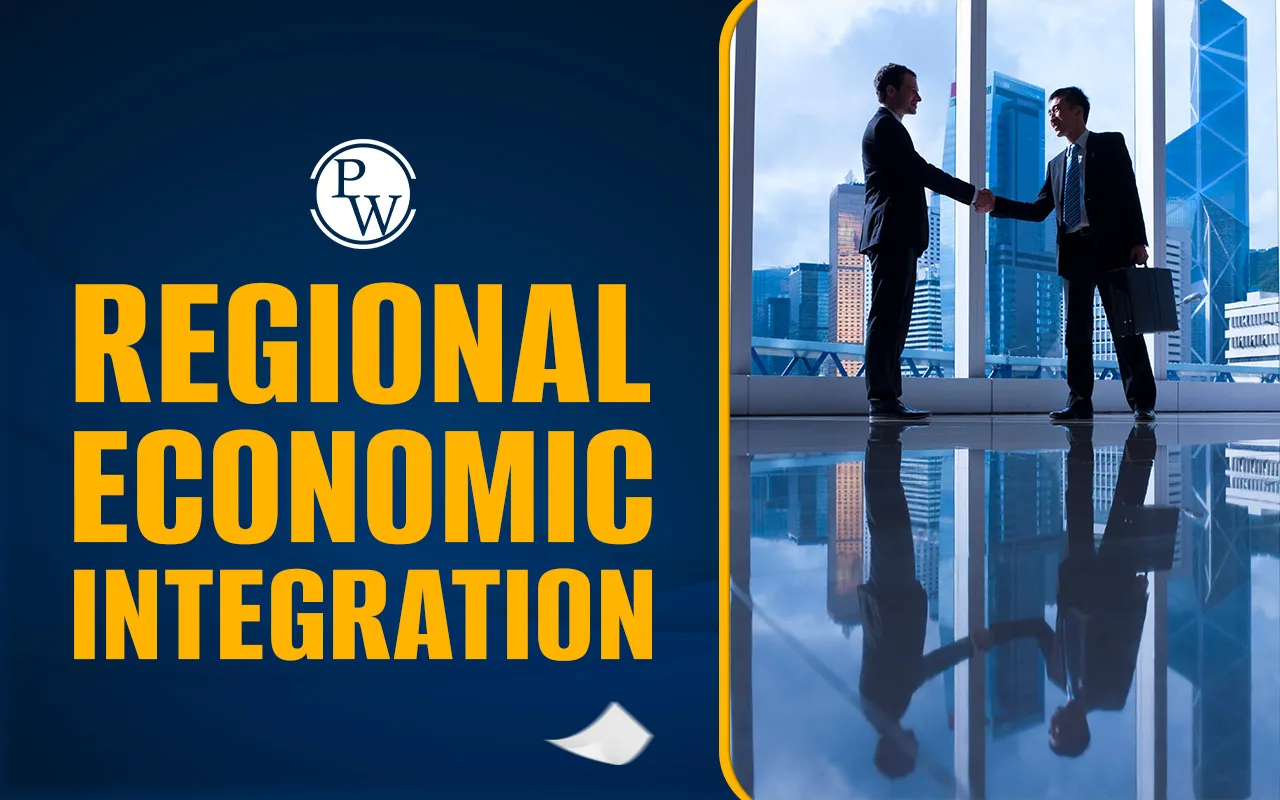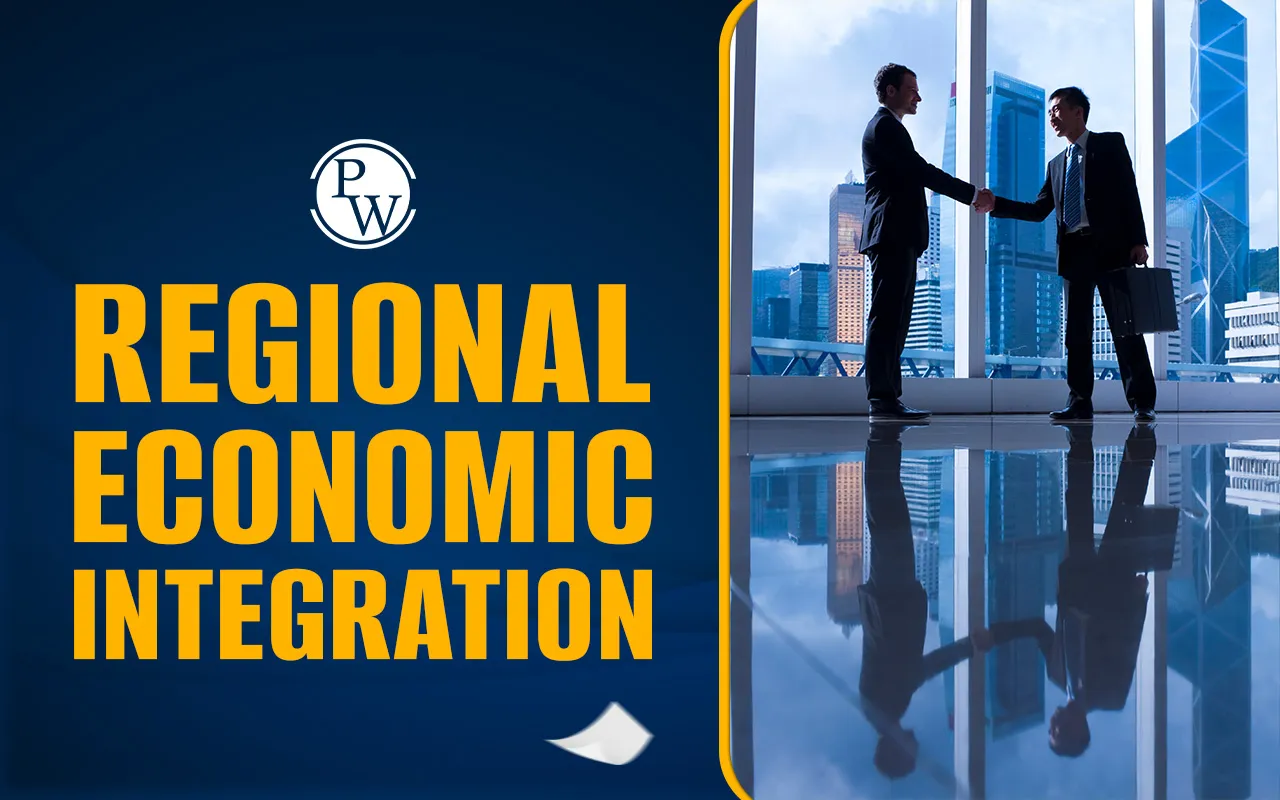

Regional economic integration is the process by which neighboring countries collaborate to reduce or eliminate trade barriers, harmonize economic policies, and promote shared growth. It helps enhance interdependence, optimize resource use, and strengthen political and cultural ties among member states.
Objectives of Regional Economic Integration
The main goals of regional integration are to:
-
Increase intra-regional trade and investment flows
-
Enhance regional economic growth through cooperation
-
Promote peace and political stability
-
Improve the global competitiveness of the region
-
Expand markets for goods and services
Benefits of Regional Economic Integration
Participating countries in a regional economic arrangement can enjoy the following advantages:
-
Trade Expansion: Removal of tariffs and quotas boosts trade within the region.
-
Economic Efficiency: Encourages specialization based on comparative advantage.
-
FDI Attraction: A larger, unified market is attractive for foreign investors.
-
Technology Sharing: Facilitates knowledge transfer and innovation.
-
Employment Generation: Economic activities lead to job creation.
-
Bargaining Power: Strengthens regional voice in global forums like the WTO.
Levels of Regional Economic Integration
Regional integration can progress through several stages, each deepening economic ties among member nations:
1. Preferential Trading Area (PTA)
Countries offer selective tariff reductions on specific goods or services among themselves, without full trade liberalization. It's the most basic form of integration.
2. Free Trade Area (FTA)
Member nations eliminate internal trade barriers but retain independent external trade policies with non-members.
Example: North American Free Trade Agreement (NAFTA).
3. Customs Union
Adds a common external tariff to the Free Trade Area structure. All member countries impose the same duties on imports from non-member countries.
Example: Southern African Customs Union (SACU).
4. Common Market
Beyond a customs union, it allows free movement of labor, capital, and services across borders.
Example: The European Single Market within the EU.
5. Economic Union
This includes features of a common market and adds policy harmonization—especially in fiscal and monetary domains. Often, a shared currency is adopted.
Example: European Union with Euro and European Central Bank.
Key Features:
-
Free trade and factor movement (like in a common market)
-
Harmonization of fiscal and monetary policies
-
Often includes a central economic authority or decision-making body
-
May adopt a common currency (e.g., Euro in the EU)
6. Political Union
The deepest integration stage where member countries also unify under shared political institutions and foreign policies.
Example: The United States of America is a full political union; the EU is moving towards it but is not there yet.
Key Features:
-
Unified economic and foreign policies
-
A supranational political structure (e.g., shared constitution, laws)
-
May include joint defense, judiciary, and foreign relations systems
Trade Creation vs Trade Diversion
When countries form Free Trade Areas (FTAs) or enter into regional economic integration, two important effects often result:
What is Trade Creation?
Trade creation happens when a Free Trade Area leads to new trade that did not exist before. This occurs because goods are now bought from a more efficient producer (with lower costs) within the FTA, instead of being produced inefficiently within the country itself.
Key Idea:
The domestic production (which was costlier) is now replaced by cheaper imports from an FTA partner.
Result:
-
National welfare improves
-
Consumers get goods at lower prices
-
Resources are used more efficiently
Example:
Suppose India produces sugar at ₹40/kg, but Sri Lanka can produce and export it at ₹25/kg. If both countries are part of an FTA and tariffs are removed, India may stop producing sugar domestically and start importing it from Sri Lanka. This is trade creation because India now gets sugar more cheaply, and its resources can be redirected to industries where it is more efficient.
What is Trade Diversion?
Trade diversion occurs when, due to an FTA, a country stops importing from a more efficient producer (outside the FTA) and instead imports from a less efficient producer (within the FTA) just because there are no tariffs.
Key Idea:
Trade is diverted from a non-member country (who is better at producing the good) to a member country (who is not as good), just because of tariff advantages.
Result:
-
Can reduce national welfare
-
Consumers may pay higher prices than necessary
-
Global efficiency may decline
But: Not always bad—in some cases, trade diversion can still be beneficial if the agreement leads to other positive long-term effects like market access, stability, or investment.
Real-Life Example: Rwanda and EAC (East African Community)
Rwanda, a member of the EAC, imports goods like food, machinery, cement, and petroleum products mainly from Kenya and Uganda—its EAC partners. However, countries like China or Belgium might be able to supply those goods more efficiently and at lower cost.
But Rwanda chooses EAC partners to avoid tariffs, even if they are not the most efficient producers. That’s trade diversion. It benefits regional partners in the short term, but may hurt Rwanda’s consumers and long-term competitiveness. Also, Rwanda exports tea and coffee, which Kenya also exports, so they’re not complementary trade partners. This reduces the economic logic of their trade relationship.
FAQs about Regional Economic Integration
What is the main purpose of regional economic integration?
How does regional integration promote economic efficiency?
What is the difference between a customs union and a free trade area?
Can trade diversion have positive effects?
What is the most advanced form of regional integration?













